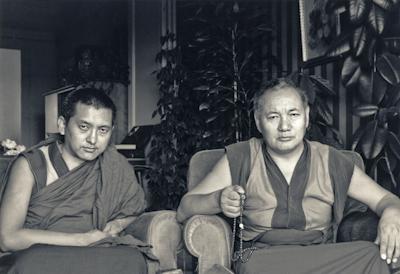Dear Friends,
Welcome to our January 2019 e-letter. We are happy to report that we reached our 2018 year end appeal goal of $50,000! Thank you so much for all your generosity and support as we continue our mission of preserving and making available the teachings of our precious teachers Lama Yeshe and Lama Zopa Rinpoche. Read on for details about new offerings to start off 2019.
New LYWA Multimedia: Making Life Meaningful
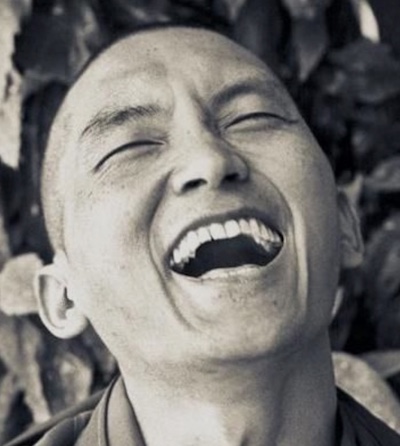 We hope you will enjoy Making Life Meaningful, the seventh chapter in the free multimedia series Freedom Through Understanding. In this chapter Lama Zopa Rinpoche rejoices for the rarity and great opportunities afforded by our present human rebirth and encourages us to examine fearlessly whether or not we are creating the causes necessary to attain human rebirth again in the future. This multimedia series is based upon the LYWA publication Freedom Through Understanding which contains teachings given by Lama Yeshe and Lama Zopa Rinpoche at a weekend seminar in Surrey, England in 1975.
We hope you will enjoy Making Life Meaningful, the seventh chapter in the free multimedia series Freedom Through Understanding. In this chapter Lama Zopa Rinpoche rejoices for the rarity and great opportunities afforded by our present human rebirth and encourages us to examine fearlessly whether or not we are creating the causes necessary to attain human rebirth again in the future. This multimedia series is based upon the LYWA publication Freedom Through Understanding which contains teachings given by Lama Yeshe and Lama Zopa Rinpoche at a weekend seminar in Surrey, England in 1975.
LYWA Multimedia brings you teachings in a fresh format that weaves together transcripts, video, images and other assets found in the Archive. We hope your understanding of these precious teachings is deepened by engaging with them in this multidimensional way. You can browse the entire free collection of all LYWA multimedia titles here.
LYWA Podcast: Realizing Loving-kindness and the Yidam
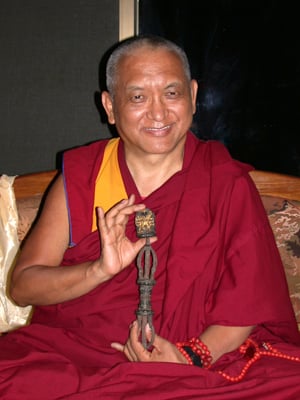 In this month’s podcast, Lama Zopa Rinpoche answers questions from students on how to generate loving-kindness without also generating attachment, and what actually happens when we realize the yidam. Rinpoche also describes the many joys and benefits that come from living a meaningful life guided by the Dharma. These teachings were given at Tse Chen Ling Center, in San Francisco, California USA, in November 2003. You can also follow along with the transcript of these teachings here.
In this month’s podcast, Lama Zopa Rinpoche answers questions from students on how to generate loving-kindness without also generating attachment, and what actually happens when we realize the yidam. Rinpoche also describes the many joys and benefits that come from living a meaningful life guided by the Dharma. These teachings were given at Tse Chen Ling Center, in San Francisco, California USA, in November 2003. You can also follow along with the transcript of these teachings here.
The LYWA podcast contains hundreds of hours of audio, each with links to the accompanying lightly edited transcripts. See the LYWA podcast page to search or browse the entire collection by topic or date, and for easy instructions on how to subscribe.
WHAT'S NEW ON OUR WEBSITE
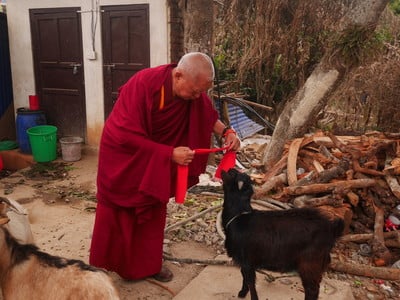 Our glossary of Buddhist terms has been revised and we are pleased to share it with you. The major change is that many of the terms now include Sanskrit (Skt) as well as two forms of Tibetan—the phonetic version (Tib), which is a guide to pronunciation, and transliteration using the Wylie method (Wyl). Please note that the glossary is a work-in-progress and the definitions are regularly reviewed and updated.
Our glossary of Buddhist terms has been revised and we are pleased to share it with you. The major change is that many of the terms now include Sanskrit (Skt) as well as two forms of Tibetan—the phonetic version (Tib), which is a guide to pronunciation, and transliteration using the Wylie method (Wyl). Please note that the glossary is a work-in-progress and the definitions are regularly reviewed and updated.
This month's new additions to Lama Zopa Rinpoche's Online Advice Book include:
- Purifying Obstacles to Dharma Practice: A student was experiencing many obstacles. Rinpoche advised daily purification practices and recommended mandala offerings with the Special Request prayer.
- Broken Tantric Commitments: Rinpoche wrote this letter to a student was struggling to maintain Highest Yoga Tantra commitments after returning to a busy Western lifestyle.
- How to Help Dying Mother: A student’s mother was dying. Rinpoche’s advice included prayers and practices, as well as instructions on how to care for her after the breath stopped.
- The Advantages of Cherishing Others: This advice was sent to a student who had been offering healing classes at a center for twenty-five years.
On our website, you can always find a list of all the newly-posted advices from Lama Zopa Rinpoche.
NEW TRANSLATIONS INTO German AND Vietnamese
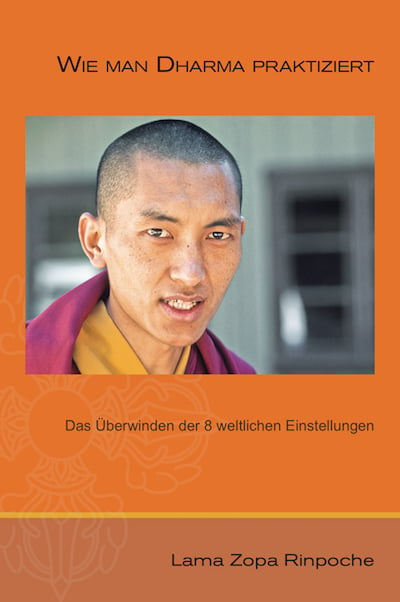 We are happy to share that How to Practice Dharma is now available in German. Wie man Dharma praktiziert was translated by Jürgen Kochfor and published by Aryatara Publications. You can download the book as a PDF file on our website and find more German translations here.
We are happy to share that How to Practice Dharma is now available in German. Wie man Dharma praktiziert was translated by Jürgen Kochfor and published by Aryatara Publications. You can download the book as a PDF file on our website and find more German translations here.
The Foundation of All Good Qualities has now been translated into Vietnamese along with several teachings by Lama Yeshe and Lama Zopa Rinpoche. These teachings were all translated by Lozang Ngodrub and edited by Võ Thư Ngân. You can download the PDFs and find more Vietnamese translations here on our website.
We are grateful to work with so many amazing translators who make our publications and transcripts available in languages other than English. Please see our website for links to translations in sixteen languages.
Special Gift: Free DVDs
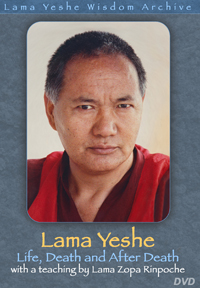 As a special gift to all of you we are offering all of our DVDs for free! With six titles to choose from, you can access hours of teachings given by Lama Yeshe and Lama Zopa Rinpoche that are not currently public on our YouTube channel. There are no limits to how many DVDs you can order -- you only need to pay the shipping cost.
As a special gift to all of you we are offering all of our DVDs for free! With six titles to choose from, you can access hours of teachings given by Lama Yeshe and Lama Zopa Rinpoche that are not currently public on our YouTube channel. There are no limits to how many DVDs you can order -- you only need to pay the shipping cost.
Losar AND THE FIFTEEN DAYS OF MIRACLES
This year Losar, the first day of the Tibetan New Year, will be on February 5. Losar kicks off the Fifteen Days of Miracles, a special time when Guru Shakyamuni Buddha showed miraculous powers in order to subdue those who lacked faith in him, and to inspire more faith in his followers. The Fifteen Days of Miracles ends on Chotrul Duchen, the Day of Miracles, on February 19. All fifteen days are merit multiplying days, when the merit of virtuous actions performed on these days is multiplied by 100 million, as cited by Lama Zopa Rinpoche from the vinaya text Treasure of Quotations and Logic. Keep an eye out for eletters from us on these special days.
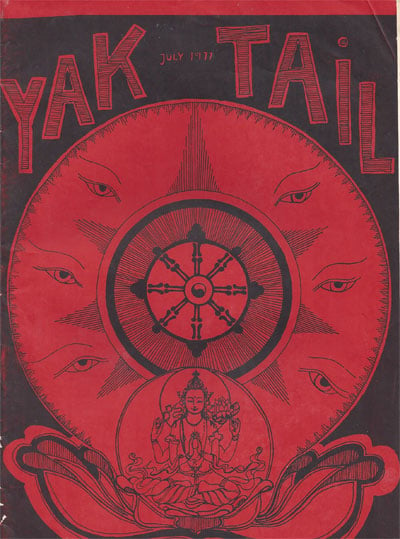 Read on to find a special teaching by Lama Yeshe on how to use intensive wisdom to gain insight into the illusory nature of reality. This teaching is excerpted from Lama's commentary on a Chenrezig practice, given at Chenrezig Institute, Australia, in July 1976. Also included is a short interview from June 28, 1977. Both were first published in Yaktail, a magazine published at Chenrezig Institute in 1977 by Ven. Loden Nyingje (Martin Willson) and Andreas Halm.
Read on to find a special teaching by Lama Yeshe on how to use intensive wisdom to gain insight into the illusory nature of reality. This teaching is excerpted from Lama's commentary on a Chenrezig practice, given at Chenrezig Institute, Australia, in July 1976. Also included is a short interview from June 28, 1977. Both were first published in Yaktail, a magazine published at Chenrezig Institute in 1977 by Ven. Loden Nyingje (Martin Willson) and Andreas Halm.
Much love,
Nick Ribush
Director
THIS MONTH'S TEACHING: Three ways of Perceiving
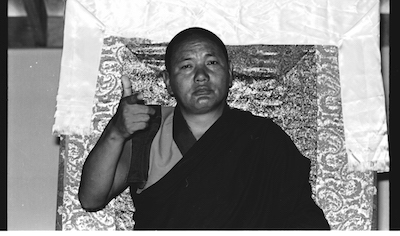 We need to determine that the objects we are perceiving are not true reality because we usually have such concrete beliefs. Since we were born we have been believing our conceptions, saying, “This is real.” This is what you always say. “Why is what I see real? Because I feel it.” “Why do I feel it? Because I see it.” Your logic is just like this—I feel, I see. So to determine that this view, this bubble existence is not real, you need to use intensive wisdom that can see through the bubble. The bubble can catch you, you know, and then you say things like, “Oh, how fantastic it is.” But when you see through the bubble, you can’t get caught like that. Remember the example of the magician who makes an object and then he put it up on show, so that there are three different views of the object.
We need to determine that the objects we are perceiving are not true reality because we usually have such concrete beliefs. Since we were born we have been believing our conceptions, saying, “This is real.” This is what you always say. “Why is what I see real? Because I feel it.” “Why do I feel it? Because I see it.” Your logic is just like this—I feel, I see. So to determine that this view, this bubble existence is not real, you need to use intensive wisdom that can see through the bubble. The bubble can catch you, you know, and then you say things like, “Oh, how fantastic it is.” But when you see through the bubble, you can’t get caught like that. Remember the example of the magician who makes an object and then he put it up on show, so that there are three different views of the object.
In his own way, by using some kind of mental energy or mantra, the magician transforms the object into a horse or an elephant. Then three kinds of people look at the object. First of all there is the magician himself: he also sees that there is an elephant there, but he simultaneously perceives it as a bubble, determining that this elephant is not actually a real thing. By seeing the elephant as a bubble, he doesn’t excite himself. He is happy to see the bubble, but at the same time he perceives the non-self-entity of that elephant. He sees the simultaneous unity of the bubble and emptiness. This is a simple example. Things appear for you but you can reject them as being nothing by seeing the non-self-entity nature of such bubbles. Next the magician’s audience come along to see what the show is that day.
He just comes along, you know, and he see the elephant. Just like that. And he believes it. He says, “Oh, look at this fantastic elephant!”
I’m sure some people have such an experience, having the conception of such an object as being real. So this person is occupied by a completely hallucinated mind. When the mantra power or whatever magic energy the magician used has disappeared, then somebody else comes along to look. So all he can see is maybe a bowl with a flower in it. He can’t see the magic view and he doesn’t have such a conception of the object. So there we have three people looking at one object. They see differently and they believe differently. This is a good example of how we see things and how we hallucinate, and you should recognize that all the time. The magician himself, he doesn’t need to reject such a view—he enjoys himself. People come to see and he makes money too. All round, the magician has a good time, so he doesn’t reject that energy—he plays with it. At the same time we don’t necessarily want you rejecting your muesli at breakfast, or your chocolate. It is not necessary that you reject, but that you see the bubble.
When you are in samadhi, or contemplating the mahamudra divine body, then you don’t have the mundane thought vibrations; you don’t have the bubble vision. But from samadhi you come down from old habits, so that is very dangerous, especially in some situations which are kind of like going back into your old family house. You know? At those times you need intensive wisdom to see through such muesli, such bubble reality. Another way of saying it is to say that sentient beings are like a dying man, who has fantastic hallucinations and bubbles, such as seeing an elephant which he believes is real. When you are looking at your desirable muesli, you are perceiving bubble muesli and you see its goodness and you believe in the self-entity of such muesli. But when you are developed so that you can recognize the non-self-entity, then you begin to perceive that instead. At the same time as you see the bubble, you perceive the empty right view within it, and when you are more developed, when you have reached beyond the dualistic mind, even that view disappears. That’s why we say you have perfection when you reach buddhahood—it means you don’t have dualistic view. You have reached beyond that. That’s all.
OK, so it’s very important that during the break times, when you are with the bubble world, you keep mindfulness, intensively seeing the nature of that world. Thank you. So you actualize that, you check up. Just try to experience that. Each time, each moment, try to be continuously mindful and aware. Otherwise everything disappears like a puff of wind.
If you really seriously want to act then it is very important to do so continuously, so session break times are also sessions for you! You come up here for a session and when you go down to the kitchen there is also a session. That’s very important, otherwise you become divided, maybe saying, “Oh, I’m eating delicious muesli, but it’s delusion and I’m not really happy. Oh, oh, oh!” You can well imagine that you would not be happy if you went about feeling like that. It is because you are not integrating—you are rejecting life. “Oh my desire, my terrible desire wants cake! Aaaaaarrrgghh!” It’s not necessary to feel bad like that. It’s really important that you enjoy. “I have so much chocolate and so much material. Many people have nothing. I am guilty!” Some people are thinking like this, but does that help? That doesn’t help anybody. Anyway, I’m sure you people don’t go like that, you know, “Oh, oh I am guilty!” Ridiculous. I’m sure you understand. You enjoy!
INTERVIEW WITH LAMA YESHE
This interview was held on June 28, 1977 during Lama Yeshe’s visit to Chenrezig Institute. With Andreas Halm.
Question: How should Dharma students coordinate physical work and meditation?
Lama: It is very important to coordinate it, because the main point in Buddhism is the action of body, speech and mind; it has to be wisdom action, otherwise there is no purpose, otherwise it’s unreasonable. We have to have bodhicitta attitude. Whatever action for everyday life, dedicate to others. To see that the Dharma is pure but people and society are negative, that’s wrong attitude. Mahayana Buddhism has the power to make an action pure, into mindfulness action. Not to separate oneself from the Dharma, right action, right attitude—not the action—is important.
Question: What do you think should be the most important activity at Chenrezig Institute?
Lama: Education, study and consciousness knowledge. We should try to put it into meditation action; mainly education, study and meditation.
Question: Why have many people a tendency to live simply, without taking advantage of the modern civilization?
Lama: Some people cannot cope; for simple-minded, narrow people they should be simple, but for intelligent people they should take advantage of the modern society rather than escape it, you understand? Whatever enjoyment, whatever is enjoyment, whatever makes happy instead of becoming like Milarpa. That’s not good, because usually the life does not last very long. Some try to become like ascetics for one or two months, but that doesn’t last very long so they go back again.
Question: Is it possible to change the elements through Dharma practice and should we do it?
Lama: Yes, definitely the nervous system, it changes the external world, it is much more powerful than nuclear power—especially the mantra power, can cure all the diseases, cancer cures by mantra, at example. It can bring the sun and moon onto the earth.
The teaching is excerpted from Lama Yeshe's commentary on a Chenrezig practice, given at Chenrezig Institute, Australia, in July 1976. Also included is a short interview from June 28, 1977. You can find this teaching and interview here on our website.
























